Movie Review – Shall We Dance (1937)
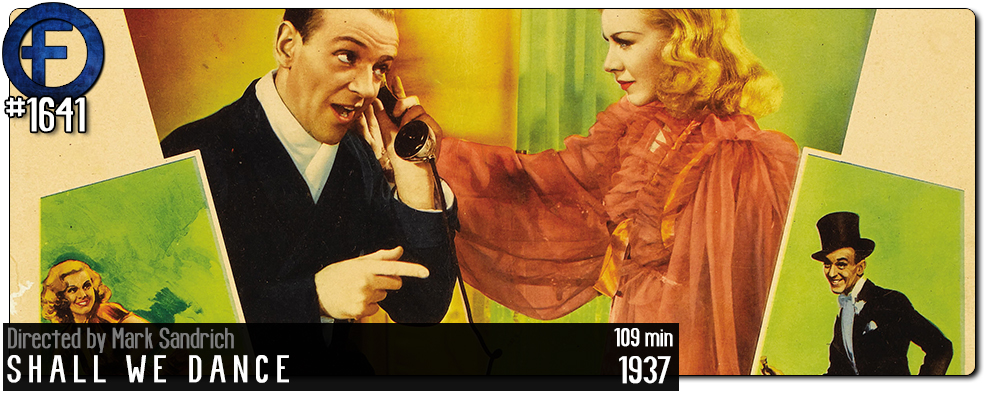
Principal Cast : Fred Astaire, Ginger Rogers, Edward Everett Horton, Eric Blore, Jerome Cowan, Ketti Gillian, William Brisbane, Harriet Hoctor, Dudley Dickerson, Charles Coleman.
Synopsis: A budding romance between a ballet master and a tap dancer becomes complicated when rumors surface that they’re already married.
********
Screwball comedies don’t come with much higher pedigree than that of Astaire and Rogers, the Hollywood duo famous for their song and dance pairings that, thanks to no fewer than ten features as a partnership, cemented their status as screen superstars and industry icons. Shall We Dance, one of their later films together, typifies the kind of farcical frenzy they often enjoyed on the screen, Astaire’s wry mugging and Rogers’ doe-eyed frostiness and elegant movement across the floor generating scintillating chemistry that lacks not for lengthy screen time together. Coupled with a score and songs by the legendary Gershwins – George and Ira providing music and lyrics respectively – and several dynamic dance routines sprinkled within, Shall We Dance’s lightweight tone and 30’s period shenanigans makes for interesting, if not always entertaining, viewing.
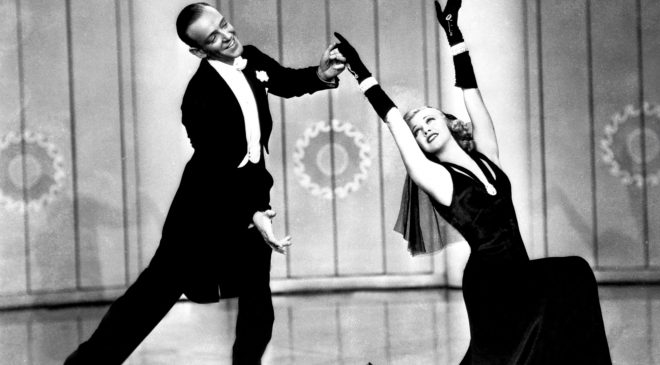
American ballet dancer Peter P Peters (Astaire), billed as “Petrov”, hopes to blend the classic dance form with the contemporary jazz style he enjoys in secret. His blustering manager, Jeffrey Baird (Edward Everett Horton) refuses to acquiesce to Peters’ demands, naturally. When Peters sees images of famous tap-dancer Linda Keene (Rogers) and falls in love, he seeks her out. Trouble is, Keen wants nothing to do with men, so when Peters meets her she’s less than accommodating. Peters contrives to sail with her back to New York from Paris, and whilst aboard their ship the rumour mill has the pair becoming secretly married, thanks in part to the machinations of Keen’s foppish manager Arthur Miller (Jerome Cowan). As the publicity mill threshes into overtime, the pair’s “marriage” becomes a problem for them both until potential divorce proceedings cause them to reevaluate their feelings for each other.
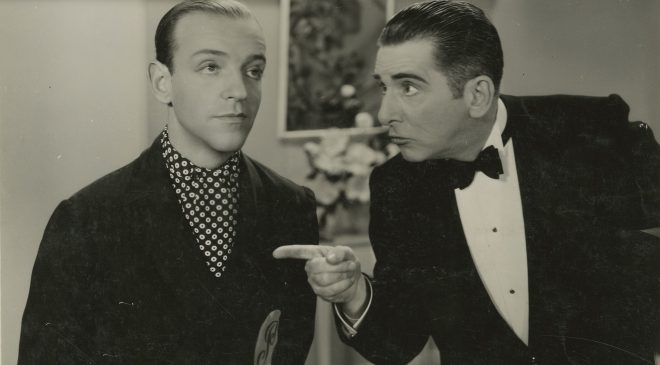
Sometimes all you want from cinema is a simple, silly escape from the humdrum of day-to-day life. Shall We Dance provides that, a frothy comedic adventure offering some nice musical numbers and a touch too much dramatic wrangling for a film like this to easily accommodate. The mixed-lovers paradox is handled with typically scattershot laughs as Mark Sandrich’s direction skips along gaily, generating as much energy and fun as he can from a fairly pedestrian plot. The laughs come mainly from the supporting roster of Horton’s Baird, Eric Blore’s proprietary concierge Cecil Flintridge, and Cowan’s flippant Miller, all of whom deliver their lines amidst constant face pulling and double-takes – Horton is the most “obvious” of comics, the kind you half expect a drum snare accompaniment to every eyebrow raise and staggered stare – and when Astaire isn’t hamming it up with his rakish smile the rest of the men here do their darndest to elevate the film. Rogers, for her part, is alternately frosty and coquettish, her wide-eyed Linda Keene the prototypical feminist ideal within the framework of 30’s patriarchal society. She’s good, and more than a match for Astaire’s jumped-up indulgence, but the strains of the period take their toll on the film’s awkward stance on modernism.
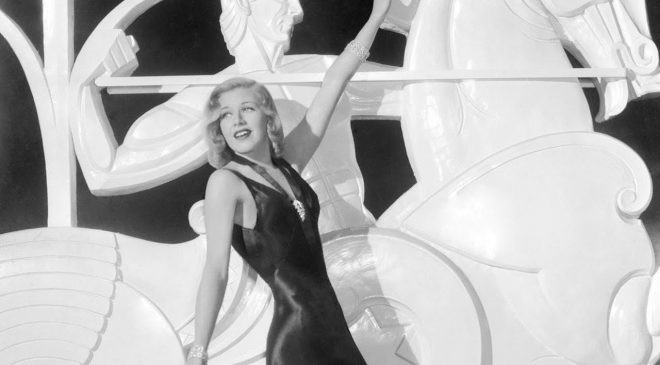
The film’s overall sense of itself is fun, to draw out laughs and have us enjoying the simple pleasure of watching classy actors do their thing on the screen. For that, Shall We Dance succeeds, and fans of classic cinema will thoroughly enjoy it. People coming into this film cold will probably have issues with it, however, not the least for its depiction of an all-black worker class below decks of the steam ship the characters travel on, which smacks of Jim Crow but should be reinforced as a byproduct of values of the period. The fact that Astaire sings and dances with this crew indicates his values of inclusiveness, and should be applauded, although the idea that the engine room of a passenger ship should be not just sooooo enormous but also so crisp and clean is a jarring juxtaposition given the rest of the film’s attention to detail. I mean, Astaire’s dancing around floors and railings that are so clean you could eat off them, and I’ve been below decks of several vessels in my time and at no point would I ever consider them “clean” to that degree. It’s a funny thing.
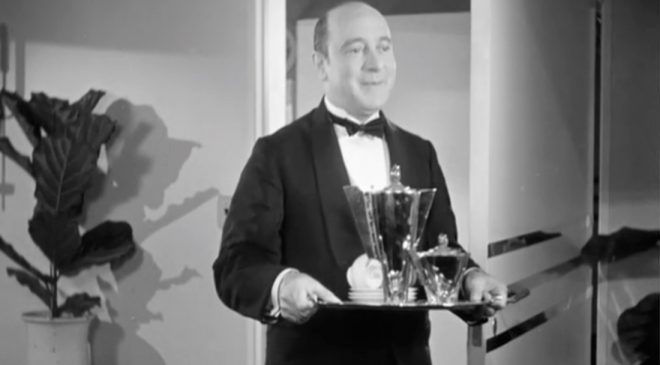
Reviewing films like these is harder for me because I often struggle to remove my modern mindset when critiquing a film made nearly a century ago. Shall We Dance had problematic pacing, in my opinion, and some of the humour didn’t quite land like it should, and the song-n-dance routines at times felt a little clunky as methods of exposition or moving the story/characters forward. having said that, any time Astaire tapped his way across the screen or danced with Rogers, especially the memorable roller-skate duet as part of the classic “Let’s Call the Whole Thing Off” number, they genuinely appear to float across the screen. But more routine numbers don’t hit the mark as well, and Astaire’s character did tend to become too clumsily written to hold my attention. Is he a halfwit, a numbskull, a dilettante, or something of all three? For me, as a guy watching another guy, he’s a bit of a predatory douche, and frankly I was surprised Rogers’ character didn’t just beat his ass down at one point, which made “liking” their pairing a little hard to do. Again, put it down to being a product of its time, this one.
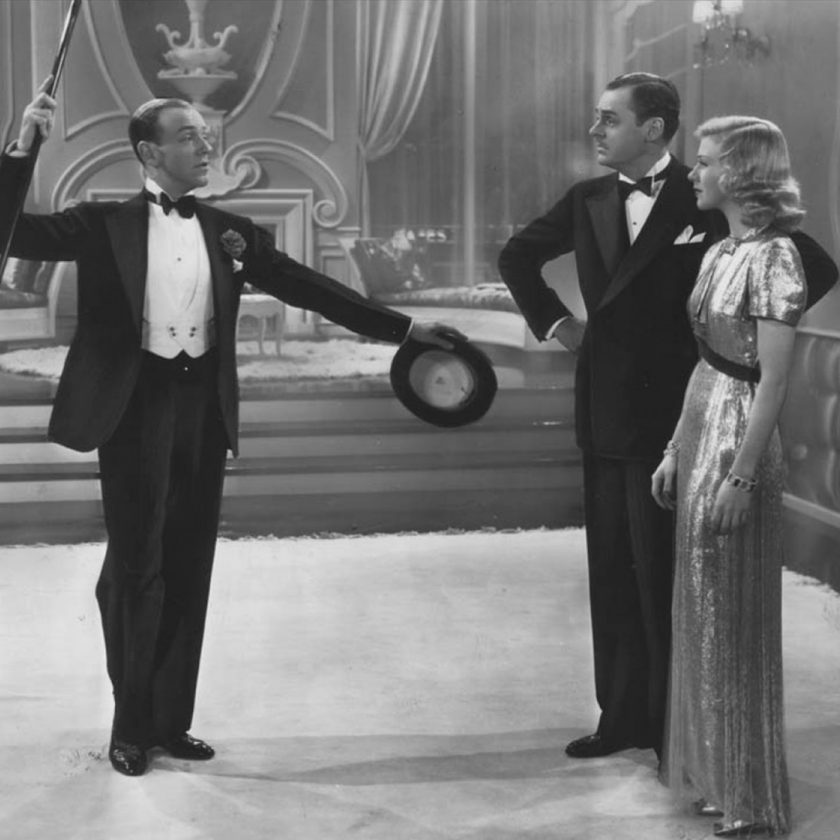
Still, the tone of the film is intended to be a blast of fun and frothy silliness, and Shall We Dance certainly serves up that exact menu. Astaire and Rogers deliver a sweet chemistry, their dance routines are (as you’d expect) practised and hypnotic (although, it should be noted an extended cameo by ballerina Harriet Hoctor, as herself, is a screen marvel of balletic prowess), and you can’t take your eyes off them when they’re together. While many of the laughs feel flat by today’s standards, and several of the farcical characters no longer feel as fresh or funny, there’s a lot of enjoyment to be found in this secondary effort from a legendary duo, and if nothing else the film is worth a look for Gershwin’s fabulous scoring.

